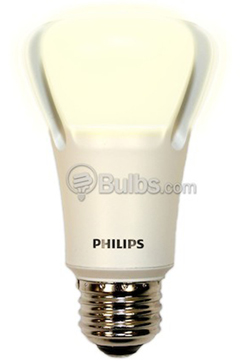$50 Light Bulb Wins Government Affordability Prize
The U.S. government has awarded appliance-maker Philips $10 million for devising an "affordable" alternative to today's standard 60-watt incandescent bulb. That standard bulb sells for around $1. The Philips alternative sells for $50.
Of course, the award-winner is no ordinary bulb. It uses only one-sixth the energy of an incandescent. And it lasts 30,000 hours-about 30 times as long. In fact, if you don't drop it, it may last 10 years or more.
But only the U.S. Government (in this case, the Department of Energy) could view a $50 bulb as cheap.
"I don't want to say it's exorbitant," a Home Depot bulb-peddler quoted by The Washington Post demurs. He goes on to say, though, that he could see how a consumer shopping by price could come to that conclusion.
The Post says retailers are reluctant to dis the bulb, lest they earn the wrath of Philips, a major supplier.
The Department of Energy created its so-called "L-Prize" to encourage manufacturers to come up with energy-efficient LED (light-emitting diode) alternatives to incandescent bulbs. To be deemed the winner, a bulb had to be affordable.
But LED alternatives already on the market and comparable to the L-Prize winner sell for less than half its price.
So by what standard is the winner cheap? The federal government's, of course. But to be fair, also by the standard of other U.S.-made LEDs. The L-Prize originally required the winning bulb to be made in the U.S.A. The components for Philips' bulb are made in California and assembled in Wisconsin. Cheaper LEDs of comparable performance come from overseas.
